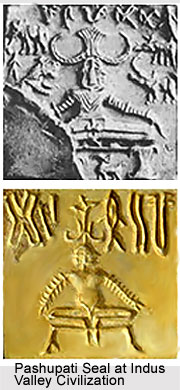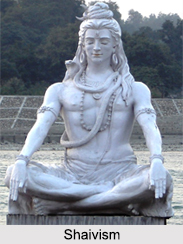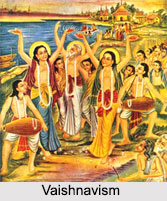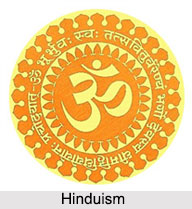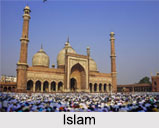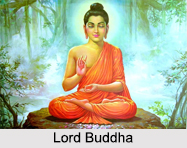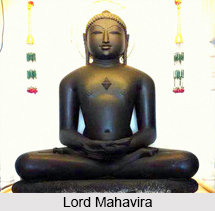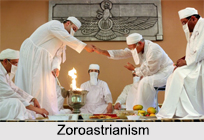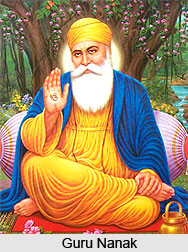During the rule of the Mughal Dynasty rulers like Babar (1526-30), Humayun (1530-40), Sher Shah Suri (1540-55), Akbar (1556-1605), Jahangir (1605-27), Shah Jahan (1627-58), Aurangzeb (1658-1707) became kings respectively. Amongst the later Mughals, only the reign of Muhammed Shah was of some importance from Jain viewpoint .
During the Mughal period, the Jain Dharma Acharyas received much importance. They received much freedom for pilgrimage, construction and reconstruction of temples, state-restriction on animals sacrifice. However, Jainism could not flourish much and its glow reduced significantly. The Jain saints received much royal respect but they had the compulsion of laud about the ruling monarchs in their different works and granthas.
Jainism during Babar
During the rule of the Babar, the first Mughal ruler Bhattaraka Yashkirti Sahu Hemraj constructed many Jain images in the temples. The `Pandav Purana` and `Harivansh Purana` were also compiled during this time. Babar also honoured Mahachandra, a Jain poet. Digambara Sadhu Sadhprasad and Seth Neminath were also given permission for constructing temple. Temples were also constructed during the rule of Humayun. Both the Mughal emperors had high esteem for Anandmeru. Shrichandra Manikchandra, Devacharya, Shreyakirti etc were famous Jains who resided here during the time of Shershah Suri.
Jainism during Akbar
During the rule of Akbar Jainism flourished to a great extent. Akbar was a great tolerant ruler. He adopted liberal policy for the Hindu as well as the Jain religion. Delhi became a centre of the Digambara Kashtha Sangha. Akbar deeply revered the Jain dharma Acharya, Muni Padmasunder. He was the author of the famous `Akbar Shringar Darpankar`. On being invited by Akbar, most renowned Bhattarak Harivijay Suri of Tapagachcha of Gujarat came to Agra. Akbar bestowed upon Harivijay Suri with the epithet "Jagadguru". According to history, it is said that Akbar had also invited a Jain orator, Vijaysen Gani to Lahore and Jinachandra Suri, the author of `Akbar pratiobodh Ras`. Akbar honoured Jinachandra Suri with the title Yug Pradhan. Akbar has also been mentioned in the works of Rajmalla (of the Kashtha sangha) and Jinadas pande, Vidya Harsh Suri, Pandit Banarsidas etc. He was also deeply influenced by the Jain Yati Bhanuchandra`s Persian knowledge. A potential disciple of Jinachandra Suri, Karmachandra Bachchawat was closely related to Akbar. The disciple also served as the ex-minister of Bikaner. On his request, 1050 Jina-images, which were taken from Sirohi to Delhi royal store, were sent to Bikaner. Another notable gentleman, Sadhu Todarmal was also associated with Akbar. He built many new temples in Agra and Mathura and also renovated many old temples. Akbar also had a Jain minister Khimji, who was given the charge of Ranthambore Fort.
Jainism during Jahangir
Jahangir was also very tolerant towards Jainism. The successor of Jinachandra Suri was Jinasimha Suri. He with his intense knowledge had influenced Jahangir to such an extent that he was bestowed with the title of "Yug Pradhan" by Jahangir. The king honoured Vijaysen Suri of the Tapagachcha who honoured him with the epithet- "Mahatapa".
During the reign of Jahangir Pandit Banarsidas and an Oswal Seth, Hiranand Mukim were highly honoured. Seth Hiranand was Jahangir`s Johari assayer or tester. Shrimal gotriya Pt. Banarsidar was a renowned poet, an outstanding scholar, an experienced metaphysician and a spiritualist. He received high honour and regards from the time of Akbar to that of Shah Jahan. His grandfather and father had served the offices of the Mughals. His residence "Shaili" was a place where coterie of scholars was held. Those who participated in them were, indeed, highly intellectual people. Jahangir`s son Shahjahan used to play chess with him and used to discuss several important matters with him. Coteries used to be organized in his time also. In 1638 Jain temples were also built by Tihuna Sahu. In 1638 Seth Shantidas built a Jain temple of Lord Shantinath in Ahmedabad. Many other notable personalities like Sanghvi Rishabhdas, Sanghpati Ratnasi, Sabalsingh Mothia, Hemraj Patni etc received honour of the time of Jahangir.
Jainism during Aurangzeb
Aurangzeb, son of Shah Jahan was a staunch Sunni who was intolerant towards Jainism. Thus progress of Jainism was considerably hampered during his time. Two world-famed Sahukars were however, present at this time. One of them was Viraji Vohra of Surat. He was a follower of Lonka gachcha. Viraji Vohra was a rich businessman during the rule of Shahjahan. Later he also took over foreign and West Indian coastal trade. Lavji Swai, the founder of Sthanakmargi Dhundhia tradition belonged to Vohra`s familial tradition. The second Sahukar was the Oswal Seth Hiranand Shah of Agra. He had settled in Patna during the rule of Aurangzeb.
Jainism also flourished considerably in Bihar during the Mughal Rule. The two Oswal brothers, Kunwarpal and Sonpal living in Patna, constructed a Jain temple. Later on Seth Hiranand went to live in Murshidabad. His son Mabikchandra made considerable contribution to Jainism and received the title of Raja. Later Mughal emperor Muhammed Shah gave his son Fatehchand the title of "Jagat seth". The last Seth had constructed a water-temple also known as Jala-Mandir at Sammet Shikhar. Seth Ghasiram of Delhi, Lala Kesarisingh, Jagat Seth Fatehchand were the prominent figures during the reign of the later Mughals Farrukhsiyar and Muhammed Shah.
